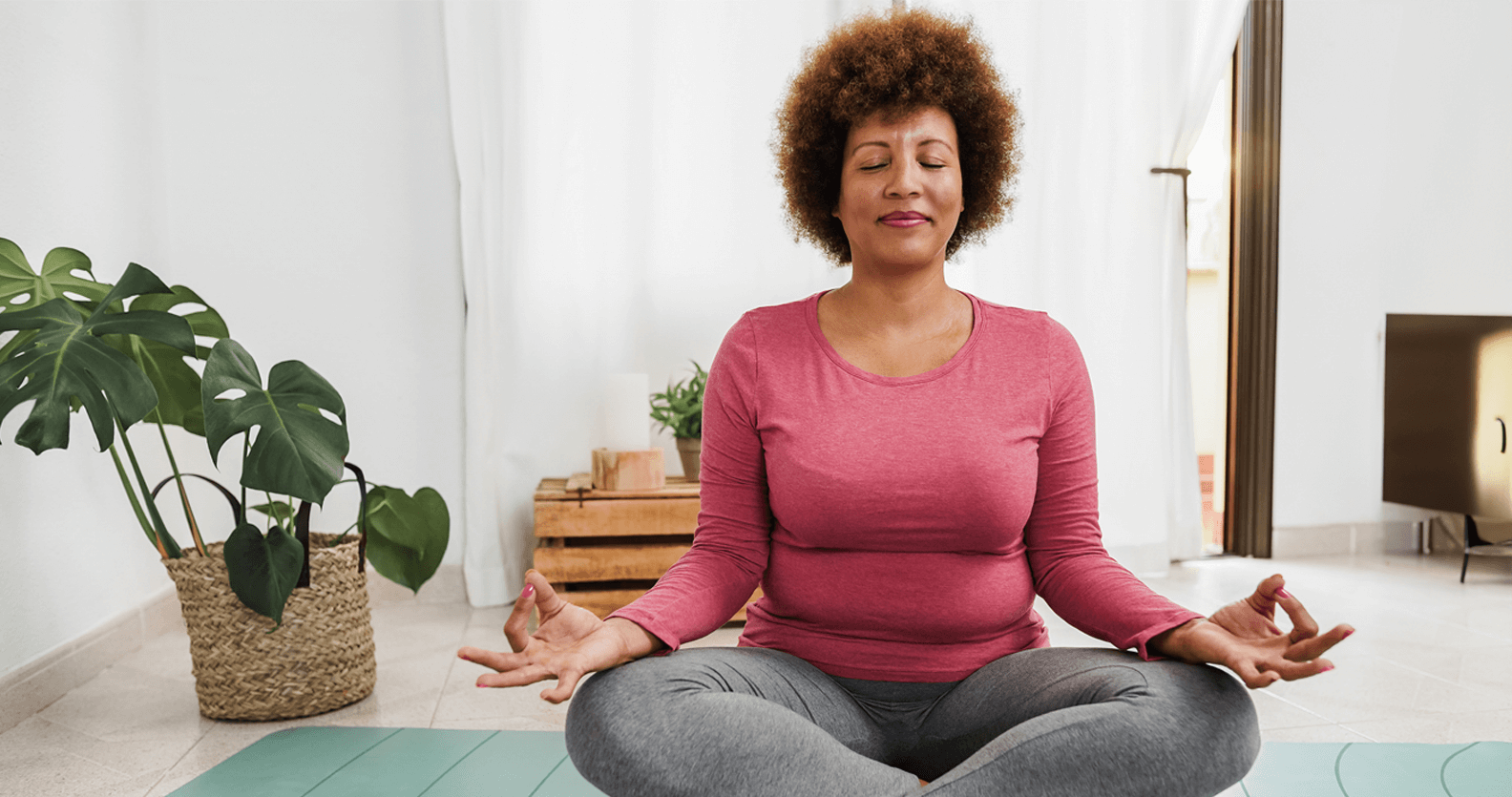At first meditation can be hard. You have to look inward and focus on the present moment. Many people do not spend a lot of time sitting quiet and still. This can be difficult when most of us have to deal with distractions in our daily lives.
But with regular meditation practice you may see these benefits:
- More focus
- Calmness
- Handling stress more effectively
- Knowing more about yourself
The best place to start is by jumping right into a meditation session. Get ready by ignoring any thoughts “for” or “against” it. An open mind will help you find the benefits for yourself. This simple breathing exercise is great for beginners.
A simple breathing meditation
The purpose of this meditation is to relax and train the mind to stay in the present moment. Find a comfortable position, sitting upright with your hands on your thighs, palms up or down, resting in your lap.
- Gently close your eyes and focus on the spot between your eyebrows. Keeping this picture in your mind will help stop distractions. Let go of all thoughts come completely into the present moment, giving yourself permission to fully and deeply relax.
- As you settle in, allow your jaw to soften and relax your shoulders. Take several deep breaths, in and out through your nose. Pay attention to your breath as it moves through your nostrils. Bring the breath in and allow your belly to expand, like a balloon being filled with air. Release the breath fully.
- Now start breathing normally again. Pay attention to what your breath is like. Is it shallow or deep, smooth or choppy? Observe the breath and any feelings that come to your body as the air comes in and out. Any thoughts that come into your mind, just see them floating by like clouds in the sky. These thoughts are neither negative nor positive. Watch them without judgment.
- If you find yourself getting restless, distracted, or tense, just breathe in and out a few times very deeply. At the same time release and breathe out all of these tensions. Breathing in peace, breathing out tension.
- If one breath is naturally long or short, let it be so. Each breath can be a different length. Let the breath be natural and unforced, and just observe and experience it all.
- Keep breathing for a few more moments. When you are ready, begin to move your fingers and toes, stretch your arms over head, and then gently open your eyes.
At the end of this session, remember that you can slow down and recharge anytime by just becoming aware of your breath. This breathing meditation is helpful because there is nothing special you need except a quiet place to sit comfortably.
Breathing tells us so much about what is happening in our bodies and minds. When the breath is calm and easy, that usually means we are feeling happy and stress-free. When the breath is choppy or uneven, we may have been exercising or feel stressed.
Listen to the signals your body and mind are giving you. An easy meditation for 10 minutes a day will help you start seeing the lasting effects of this ancient practice.



